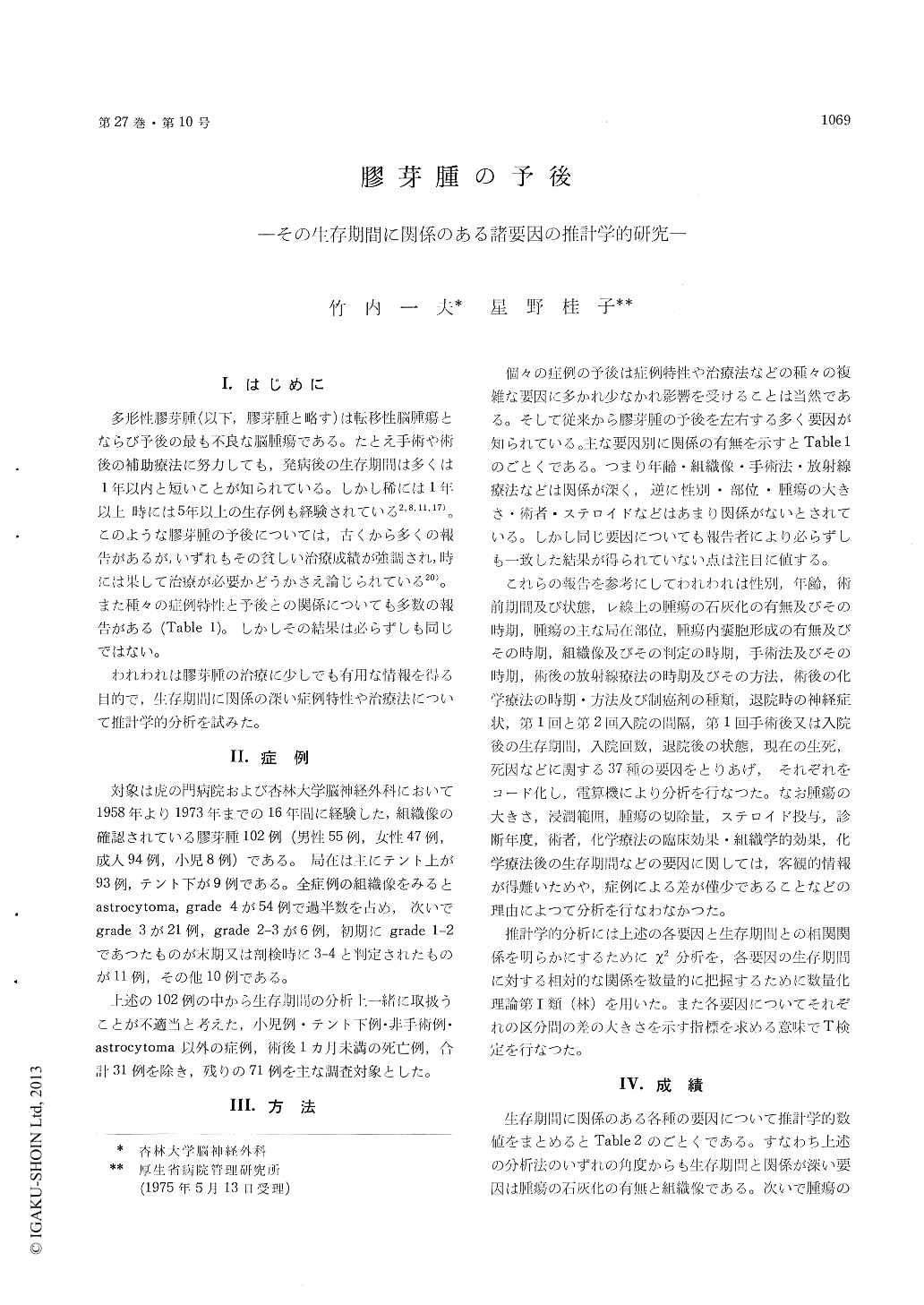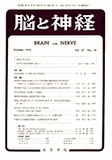Japanese
English
- 有料閲覧
- Abstract 文献概要
- 1ページ目 Look Inside
I.はじめに
多形性膠芽腫(以下,膠芽腫と略す)は転移性脳腫瘍とならび予後の最も不良な脳腫瘍である。たとえ手術や術後の補助療法に努力しても,発病後の生存期間は多くは1年以内と短いことが知られている。しかし稀には1年以上時には5年以上の生存例も経験されている2,8,11,17)。このような膠芽腫の予後については,古くから多くの報告があるが,いずれもその貧しい治療成績が強調され,時には果して治療が必要かどうかさえ論じられている20)。また種々の症例特性と予後との関係についても多数の報告がある(Table 1)。しかしその結果は必らずしも同じではない。
われわれは膠芽腫の治療に少しでも有用な情報を得る目的で,生存期間に関係の深い症例特性や治療法について推計学的分析を試みた。
Glioblastoma multiforme has been and still is themost common and most lethal of brain tumors forwhich neither surgical nor adjuvant therapies canbe applied. Though the average period of survivalfollowing surgery is less than a year, there havebeen a few patients who survived for longer periods.
A statistical evaluation of factors affecting thesurvival period was conducted by studying 71 casesof histologically confirmed, supratentorial and ope-rated glioblastoma multiforme in adult treatedduring the past 16 years, the conclusions being asfollow:
1. The roentgenographic state of calcificationsand histologic appearance of the neoplasma havesignificance in regard to the post-operative periodof survival.
2. Post-operative adjuvant treatment, location ofthe neoplasma and the duration of pre-operativesymptoms have some effect on the period of survival.
3. The patient's age at onset and pre-operativecondition, and the cystic formation of the neoplasmasomewhat affect the period of survival.
4. Such other factors as the patient's sex, surgicalmethods, adjuvant treatment methods, interval be-tween first and second hospitalization, frequency ofhospitalization, state of survival, cause of death,etc., are not constant prognostic factors.

Copyright © 1975, Igaku-Shoin Ltd. All rights reserved.


